The Shanghai Zoo is a popular attraction in China, featuring over 6,000 animals from 620 species. It has a total area of 743,000 square meters and includes indigenous animals like giant pandas and golden monkeys, as well as foreign species from around the world. The zoo also boasts a large number of gorillas and has significant green areas with native trees and plants.
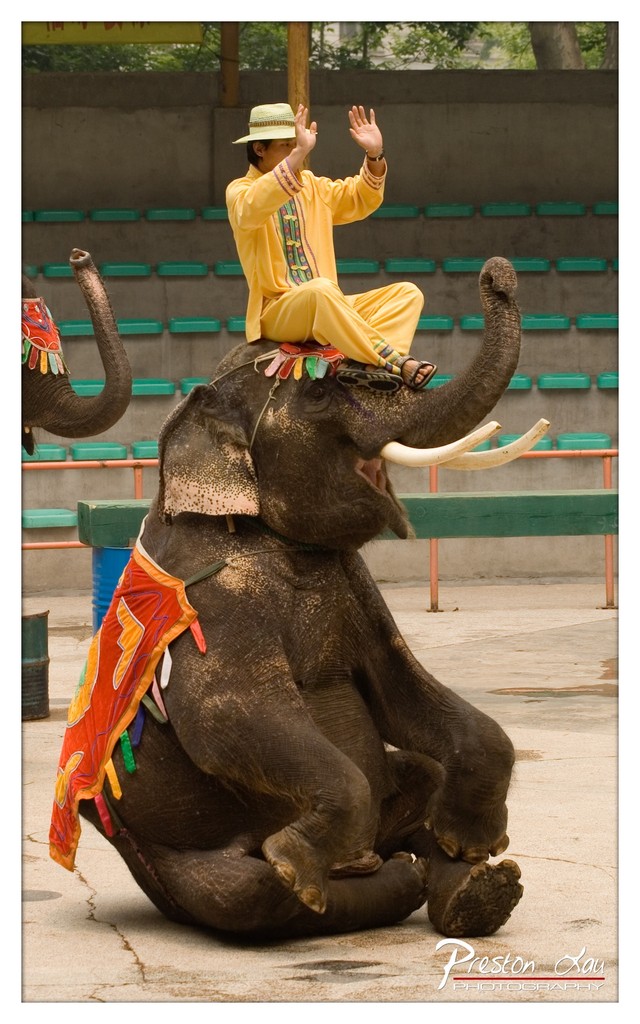

1. Overall Rating (0–10) — 7.0
This photograph captures a dynamic moment of performance, where the interaction between the elephant and its handler conveys both strength and control. The vibrant costume and expressive posture lend a theatrical energy to the scene, while the background’s muted tones help focus attention on the central figures. While the image feels slightly staged, it succeeds in evoking the spectacle of a live animal act, balancing documentary realism with narrative flair.
2. Composition (0–10) — 7.0
The elephant and rider are well-centered, with the animal’s seated pose creating a strong focal point. The diagonal lines of the raised trunk and extended arms add movement, while the green bleachers in the background provide a subtle sense of place without distracting from the main subject.
3. Lighting (0–10) — 6.5
Natural daylight illuminates the scene evenly, though the overcast sky softens shadows and reduces contrast. The light is functional but lacks the drama of directional sunlight, which could have enhanced the textures of the elephant’s skin and the fabric of the costume.
4. Color & Tone (0–10) — 7.5
The bold yellow of the handler’s outfit and the bright orange and red of the cloth on the elephant create a striking contrast against the muted gray and green backdrop. The warm tones enhance the sense of performance and energy, while the overall color palette remains cohesive and visually engaging.
5. Creativity (0–10) — 7.0
The image captures a moment that is both culturally specific and universally compelling—showcasing the unique relationship between human and animal in a performance setting. The choice to freeze the action at the peak of the pose adds narrative depth and conveys a sense of rhythm and timing.
6. Technical Quality (0–10) — 8.0
The focus is sharp on the elephant and rider, with fine detail visible in the skin, tusks, and fabric. The image is clean, with no noticeable noise or distortion, and the watermark is discreetly placed.
7. Emotional Impact (0–10) — 6.5
The image evokes a sense of wonder and spectacle, but the emotional connection is tempered by the awareness of the animal’s captivity. While the performance is visually captivating, it also prompts reflection on the ethics of such displays, creating a complex emotional response.
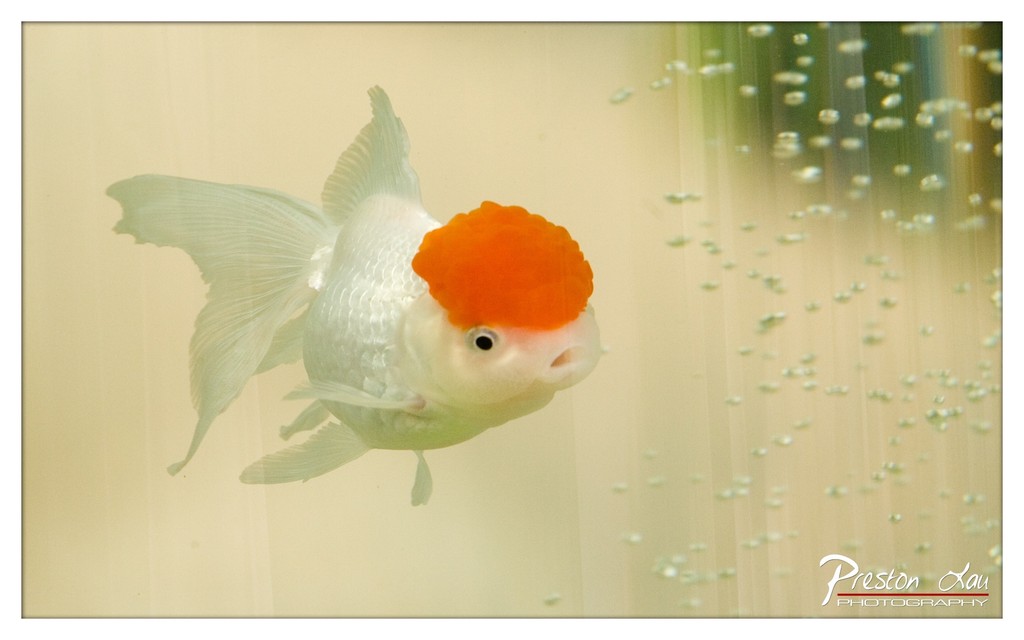

1. Overall Rating (0–10) — 7.5
This photograph captures the serene elegance of a lionhead goldfish with striking clarity and gentle charm. The soft, diffused lighting and warm tonal palette create a tranquil underwater atmosphere, while the subject’s vivid orange growth and delicate fins stand out against the muted background. A slight overexposure in the highlights and a busy bubble pattern slightly detract from the image’s refined quality, but the composition remains engaging and aesthetically pleasing.
2. Composition (0–10) — 7.0
The fish is well-placed off-center, creating a sense of movement and balance, though the scattered bubbles on the right draw attention away from the subject. A tighter crop could enhance focus on the fish’s expressive features.
3. Lighting (0–10) — 8.0
Soft, even lighting enhances the fish’s translucence and texture without harsh shadows, creating a dreamy, ethereal quality. The light direction highlights the goldfish’s unique head growth and delicate fins.
4. Color & Tone (0–10) — 7.5
The warm beige background complements the orange and white tones of the fish, creating a harmonious palette. The slight greenish tint in the bubbles adds a subtle contrast, though it slightly disrupts the overall warmth.
5. Creativity (0–10) — 8.0
The photographer captures a quiet moment of aquatic beauty with an eye for detail and emotion. The choice to focus on the goldfish’s distinctive features and the gentle rise of bubbles adds narrative depth and whimsy.
6. Technical Quality (0–10) — 8.0
The image is sharp and clear, with precise focus on the fish’s face and fins. The background is softly blurred, emphasizing the subject, though minor noise and overexposure in the highlights reduce overall technical polish.
7. Emotional Impact (0–10) — 7.0
The photograph evokes a sense of calm and wonder, inviting the viewer to appreciate the delicate beauty of a small creature in its element. The gentle motion and soft tones create a peaceful, almost meditative mood.
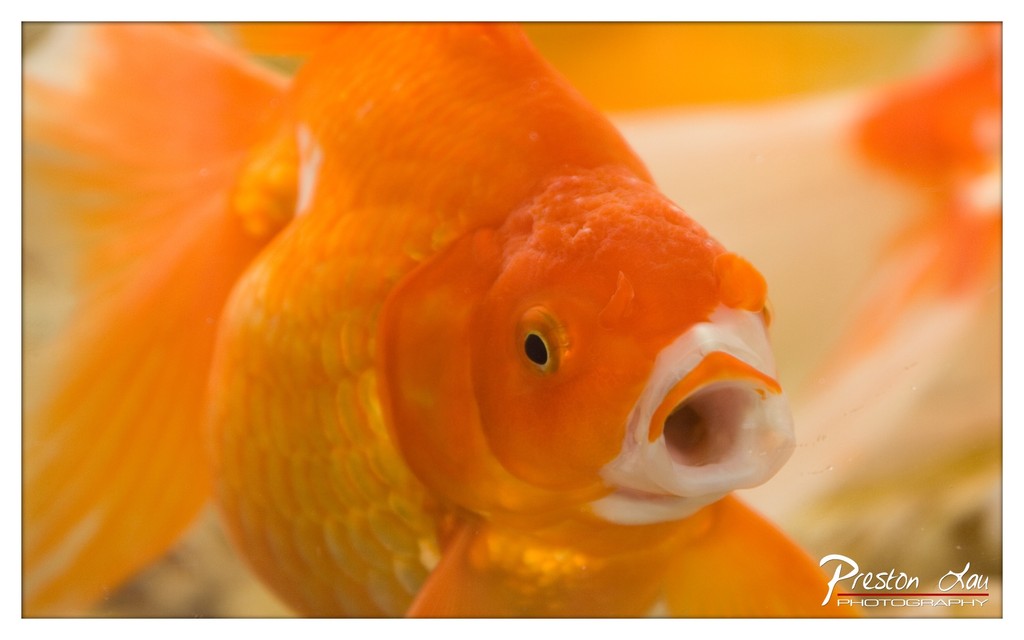

1. Overall Rating (0–10) — 7.8
This close-up of a goldfish radiates a vibrant, almost surreal energy, capturing the creature’s textured scales and expressive face with striking clarity. The warm, golden tones and soft background blur create a sense of intimacy, drawing the viewer into the fish’s quiet world. While the composition is compelling, the image leans slightly toward the clinical, missing the deeper narrative that could elevate it beyond a beautiful specimen shot.
2. Composition (0–10) — 7.0
The subject is well-placed, with the goldfish’s head and open mouth creating a focal point that draws the eye. The shallow depth of field isolates the fish effectively, though the framing could be tighter to emphasize the facial expression and reduce the visual distraction of the tail on the left.
3. Lighting (0–10) — 8.0
The lighting is warm and directional, highlighting the texture of the scales and giving the fish a luminous glow. The soft, diffused light enhances the subject’s natural color without harsh shadows, contributing to the image’s serene and inviting mood.
4. Color & Tone (0–10) — 8.5
The dominant golden-orange palette is rich and harmonious, with subtle gradations from deep amber to bright highlights. The warm tones evoke a sense of life and vitality, while the soft background complements the subject without competing for attention.
5. Creativity (0–10) — 7.5
The photographer captures a familiar subject—goldfish—with a fresh, almost anthropomorphic perspective, emphasizing the fish’s “face” and expression. This approach adds a layer of charm and personality, though the image remains grounded in naturalism rather than abstraction or conceptual storytelling.
6. Technical Quality (0–10) — 8.5
The image is sharp where it matters, with excellent focus on the fish’s eye and mouth. The macro detail is crisp, and the exposure is well-balanced, preserving texture and color without overexposure or noise.
7. Emotional Impact (0–10) — 7.0
The image evokes a sense of wonder and quiet connection, inviting the viewer to pause and appreciate the beauty in a small, often overlooked creature. The fish’s open mouth and wide eye give it a curious, almost sentient quality that resonates emotionally, though the effect is more whimsical than profound.
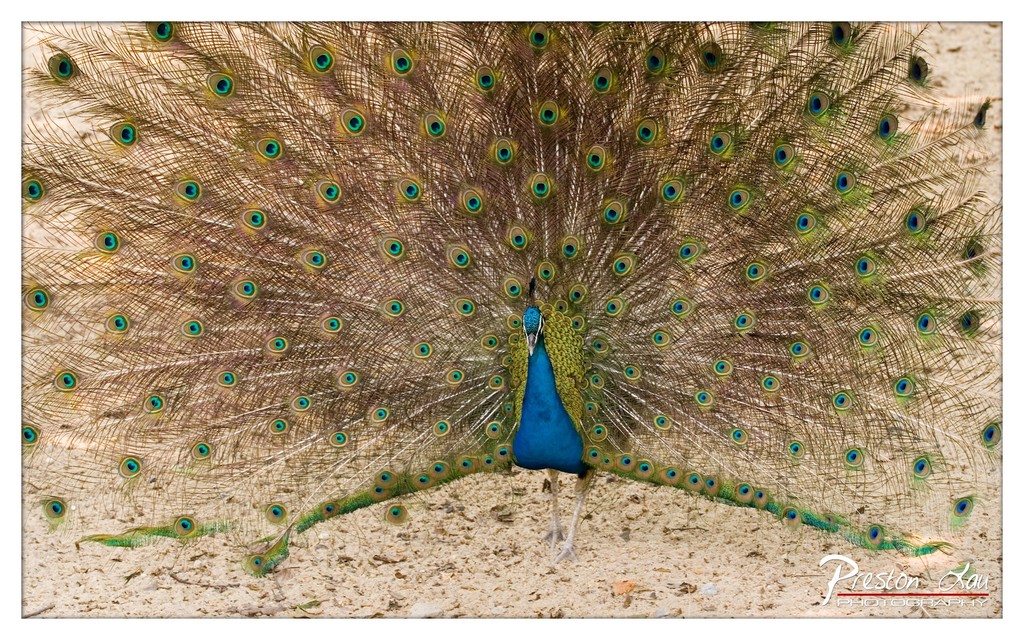

1. Overall Rating (0–10) — 8.0
This photograph captures the majestic splendor of a peacock in full display, where the intricate fan of feathers radiates with natural opulence. The vibrant iridescence of the plumage contrasts beautifully with the muted earthy tones of the ground, creating a visually arresting focal point. While the image is striking in its detail and color, the composition’s symmetry and lack of environmental context slightly limit its narrative depth, keeping it more as a celebration of beauty than a story.
2. Composition (0–10) — 8.0
The peacock is centered and dominates the frame, creating a balanced, symmetrical composition that emphasizes the grandeur of the display. The wide spread of the tail feathers fills the image, drawing the eye outward from the central body, while the clean background avoids distractions and enhances focus.
3. Lighting (0–10) — 8.0
Natural, even lighting highlights the texture and iridescence of the feathers without harsh shadows or overexposure. The soft, diffused light enhances the subtle shifts in color across the plumage, particularly the blues and greens, giving the feathers a luminous quality.
4. Color & Tone (0–10) — 9.0
The palette is rich and harmonious, with the deep blues and emerald greens of the feathers standing out against the neutral sandy background. The color contrast is striking yet balanced, and the tonal range is well-managed, allowing both the vibrant highlights and delicate details to shine.
5. Creativity (0–10) — 7.5
While the image is a powerful display of natural beauty, its strength lies more in documentation than innovation. The moment is iconic and well-executed, but the straightforward presentation limits its conceptual originality.
6. Technical Quality (0–10) — 9.0
The photograph is sharp and detailed, with excellent focus on the peacock’s body and the intricate patterns of the feathers. The depth of field is well-controlled, capturing the full spread of the tail with clarity and precision.
7. Emotional Impact (0–10) — 8.5
The image evokes awe and admiration, tapping into the universal fascination with the peacock’s regal display. There’s a quiet dignity in the bird’s stance, and the viewer is drawn into the moment of natural splendor, feeling a sense of wonder at the beauty of the living world.
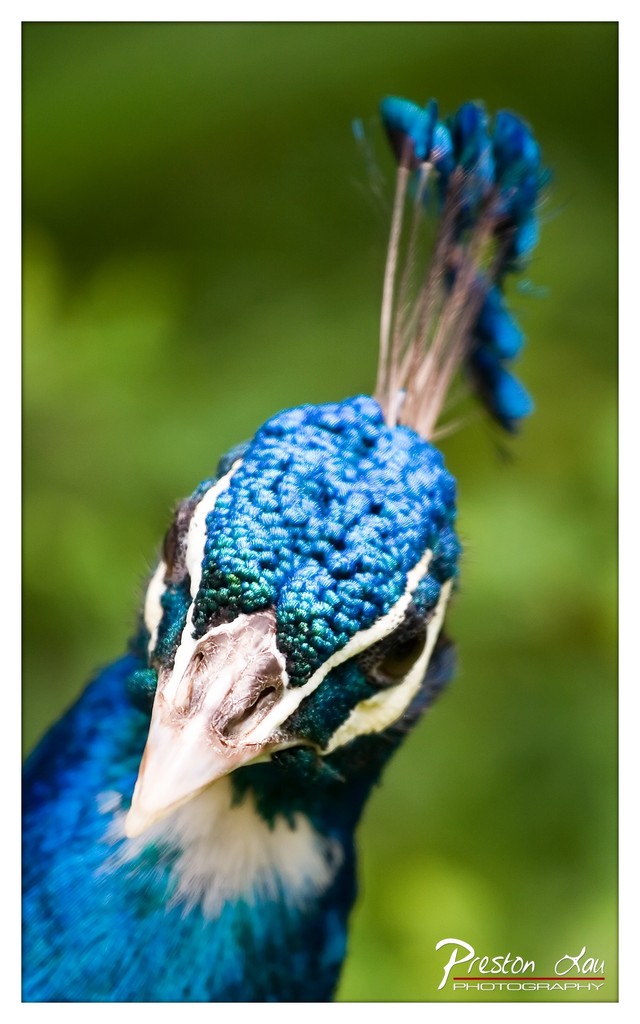

1. Overall Rating (0–10) — 8.5
This portrait of a peacock captures the bird’s regal presence with striking detail and vivid color, transforming a natural subject into a work of artistic elegance. The tight framing and shallow depth of field emphasize the texture and iridescence of the feathers, while the soft green backdrop provides a gentle contrast that enhances the subject’s brilliance. A subtle shift in angle or lighting could elevate the emotional intensity, but as it stands, the image is both technically refined and visually captivating.
2. Composition (0–10) — 8.0
The subject is centered with a slight tilt, creating a dynamic yet balanced frame. The blurred green background isolates the peacock, drawing immediate attention to its head and crest, though the lower portion of the neck feels slightly underemphasized.
3. Lighting (0–10) — 8.5
Soft, diffused light enhances the natural sheen of the feathers without creating harsh shadows. The direction of light highlights the intricate texture of the blue plumage and the delicate white markings around the eye, contributing to a sense of depth and dimension.
4. Color & Tone (0–10) — 9.0
The rich, saturated blues of the peacock contrast beautifully with the soft, muted green background. The color harmony is instinctively pleasing, with a natural warmth in the white and cream tones that balances the coolness of the blue, giving the image a vibrant yet cohesive look.
5. Creativity (0–10) — 8.5
The photographer’s choice to focus on the head and crest rather than the full train creates an intimate, almost human-like portrait. The image transforms a familiar creature into something majestic and contemplative, suggesting quiet dignity rather than mere spectacle.
6. Technical Quality (0–10) — 9.0
The focus is sharp on the eye and crest, with excellent detail in the feather texture. The shallow depth of field is skillfully executed, and the exposure is balanced, preserving detail in both highlights and shadows.
7. Emotional Impact (0–10) — 8.0
There’s a quiet intensity in the peacock’s gaze that invites introspection. The image evokes a sense of wonder and admiration for the beauty of nature, with a touch of solemnity that lingers beyond the moment.
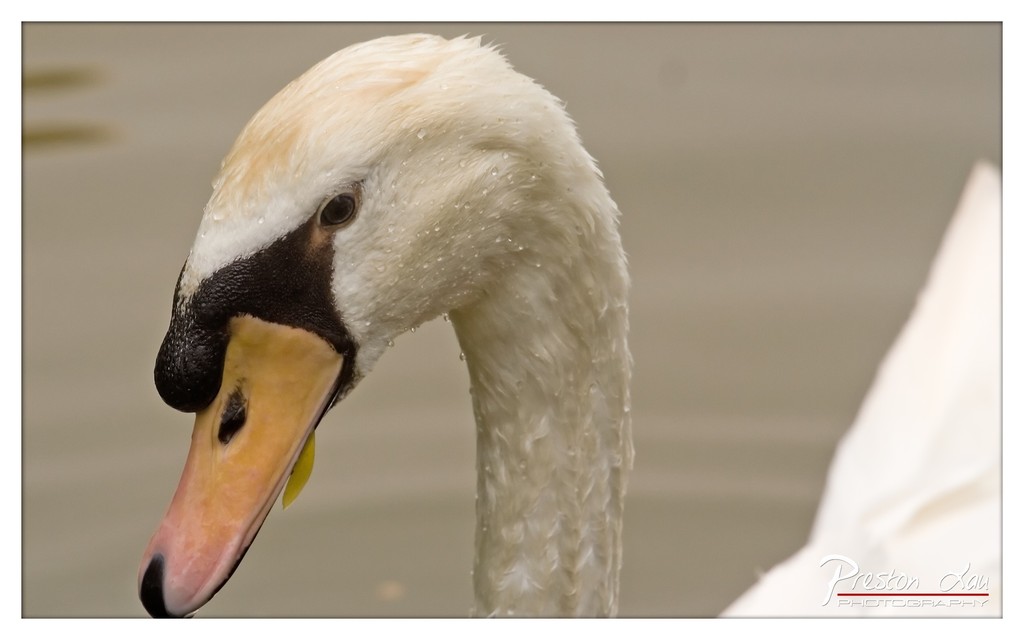

1. Overall Rating (0–10) — 7.0
This portrait of a swan captures a moment of serene introspection, with delicate water droplets glistening on its feathers adding a tactile sense of freshness. The composition draws the eye to the bird’s elegant profile, while the soft, muted background enhances its presence. While the image is beautifully detailed, the slightly overcast lighting tempers its emotional depth, keeping it poised between documentation and artistry.
2. Composition (0–10) — 7.5
The swan is framed off-center, creating a balanced diagonal that guides the eye naturally across the image. The shallow depth of field isolates the subject effectively, though a tighter crop could further emphasize the bird’s regal form.
3. Lighting (0–10) — 6.5
Soft, diffused light evenly illuminates the swan, minimizing harsh shadows and preserving fine feather texture. However, the lack of directional warmth limits the sense of atmosphere, giving the scene a slightly flat quality.
4. Color & Tone (0–10) — 7.0
The palette is restrained—soft whites, warm yellows, and deep black—creating a harmonious and natural look. The subtle contrast between the swan’s plumage and the neutral background enhances visual clarity without overwhelming.
5. Creativity (0–10) — 6.5
The image succeeds in capturing a quiet, contemplative moment, but it leans more toward traditional wildlife portraiture than bold artistic interpretation. The focus is on realism rather than conceptual innovation.
6. Technical Quality (0–10) — 8.0
The sharpness is excellent, particularly in the feathers and beak, with fine detail rendered clearly. Focus is precise, and noise is minimal, showcasing strong technical execution.
7. Emotional Impact (0–10) — 7.0
There’s a quiet dignity in the swan’s stillness, evoking a sense of calm and natural grace. The viewer is invited to pause and reflect, though the emotional resonance remains subtle rather than powerful.
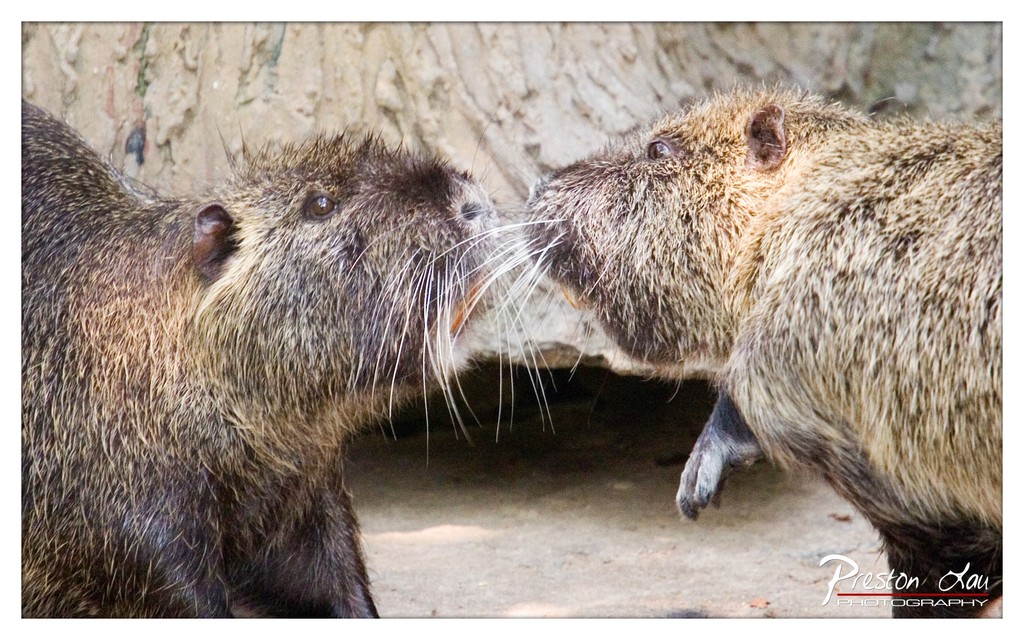

1. Overall Rating (0–10) — 7.5
This photograph captures an intimate, almost tender moment between two capybaras, their whiskers nearly touching in a quiet exchange that feels both natural and emotionally charged. The close framing draws the viewer into the animals’ world, emphasizing their soft fur and expressive faces. While the lighting is functional and the background slightly distracting, the image succeeds in conveying a sense of connection and gentle curiosity.
2. Composition (0–10) — 7.0
The tight, symmetrical framing centers the two capybaras, creating a balanced and focused composition. The diagonal alignment of their heads adds subtle dynamism, while the shallow depth of field isolates the subjects from the muted background.
3. Lighting (0–10) — 6.5
Natural, diffused light softly illuminates the capybaras, highlighting the texture of their fur without harsh shadows. The light is even but lacks dramatic contrast, giving the scene a flat, observational quality.
4. Color & Tone (0–10) — 7.0
The palette is earthy and natural, dominated by browns and tans that reflect the animals’ habitat. The color balance is accurate, and the contrast is moderate, allowing the details in the fur and whiskers to stand out.
5. Creativity (0–10) — 7.5
The image captures a rare moment of interaction between the animals, transforming a simple wildlife scene into a narrative of connection. The choice to focus tightly on their faces elevates the emotional resonance, making it more than just a documentary shot.
6. Technical Quality (0–10) — 8.0
Sharp focus on the capybaras’ faces and whiskers ensures fine detail, while the background is softly blurred. The image is well-exposed and free from noticeable noise or artifacts.
7. Emotional Impact (0–10) — 8.0
There is a quiet intimacy in the way the capybaras lean toward one another, evoking feelings of companionship and tenderness. The viewer is drawn into a moment of silent communication, making the image emotionally compelling and memorable.
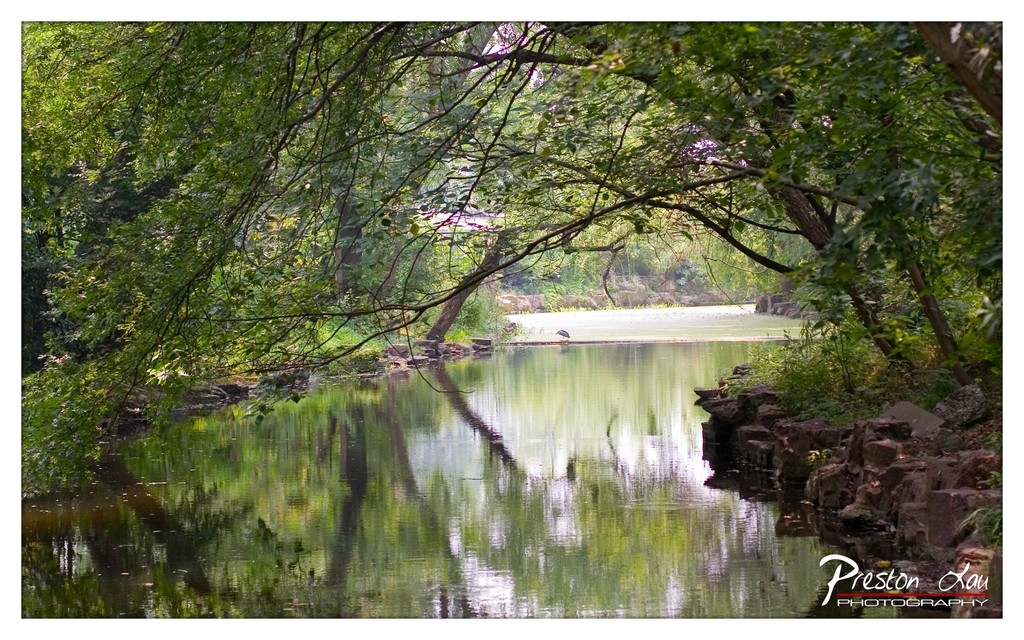

1. Overall Rating (0–10) — 7.5
This photograph captures a serene, sun-dappled woodland stream, where the interplay of light and reflection evokes a deep sense of tranquility. The natural frame formed by overhanging branches enhances the sense of intimacy, drawing the viewer into a secluded, almost sacred space. While the image is rich in atmosphere, it is slightly hindered by a softness in the overall focus that tempers its visual punch.
2. Composition (0–10) — 8.0
The arching branches create a natural frame that guides the eye toward the calm water and distant pond, establishing a strong sense of depth. The placement of the water’s edge and the rocky bank on the right balances the visual weight, while the reflection doubles the greenery, reinforcing the scene’s harmony.
3. Lighting (0–10) — 8.0
Soft, diffused sunlight filters through the canopy, casting gentle highlights on the water and leaves. The interplay of light and shadow adds texture and dimension, while the dappled effect enhances the peaceful, secluded mood.
4. Color & Tone (0–10) — 8.5
A lush, verdant palette dominates the image, with varying shades of green creating a cohesive and calming atmosphere. The subtle cool tones in the water and shadows contrast gently with the warm highlights, resulting in a balanced and natural color harmony.
5. Creativity (0–10) — 7.5
The photographer leverages natural framing and reflection to create a visually engaging narrative of quietude. While the subject is familiar, the thoughtful composition and atmospheric lighting elevate it beyond a simple landscape into a meditative moment.
6. Technical Quality (0–10) — 7.0
The image is sharp in the midground, with good clarity in the foliage and water. However, the overall sharpness is slightly soft, possibly due to atmospheric haze or lens characteristics, which reduces the crispness of fine details.
7. Emotional Impact (0–10) — 8.0
The photograph conveys a profound sense of peace and solitude, inviting the viewer to pause and reflect. The stillness of the water and the dappled light evoke a quiet contemplation, making it emotionally resonant and memorable.
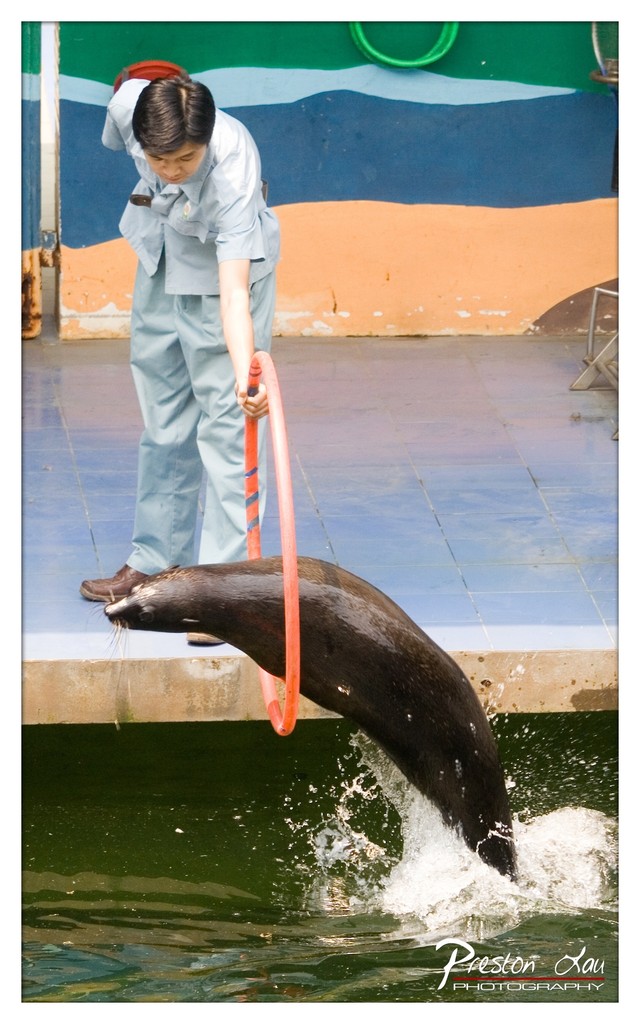

1. Overall Rating (0–10) — 7.0
This photograph captures a dynamic moment of interaction between a trainer and a sea lion, conveying both energy and connection. The sea lion’s leap through the hoop creates a strong focal point, while the vivid colors of the backdrop add visual interest. While the scene feels staged, its spontaneity and athleticism lend it a sense of authenticity and charm. The composition is slightly uneven, and the lighting is flat, but the image succeeds in capturing a lively, engaging performance.
2. Composition (0–10) — 6.5
The subject is well-placed, with the sea lion’s arc drawing the eye through the frame. However, the off-center framing and cluttered background slightly disrupt visual balance, and the wide perspective dilutes the immediacy of the action.
3. Lighting (0–10) — 5.5
The lighting is flat and even, likely from an overcast sky or diffuse outdoor source, which minimizes shadows and depth. While it ensures clarity, it also flattens the scene’s emotional tone and reduces the sense of drama.
4. Color & Tone (0–10) — 6.5
The vibrant orange hoop contrasts sharply with the sea lion’s dark fur and the green and blue backdrop, creating a lively palette. The colors are reasonably saturated, though the overall tone feels slightly washed out, particularly in the water and pavement.
5. Creativity (0–10) — 7.5
The image captures a moment of trained behavior with a sense of motion and purpose. The choice to freeze the sea lion mid-leap is bold and engaging, transforming a routine performance into a striking visual narrative.
6. Technical Quality (0–10) — 7.0
The focus is sharp on the sea lion and trainer, and the motion is captured with clarity. The depth of field is adequate, keeping the main subjects in focus while softening the background just enough to avoid distraction.
7. Emotional Impact (0–10) — 6.5
The image evokes a sense of joy and admiration for the animal’s skill and the trainer’s control. While it doesn’t reach deep emotional resonance, the energy and precision of the moment create a feeling of wonder and connection.
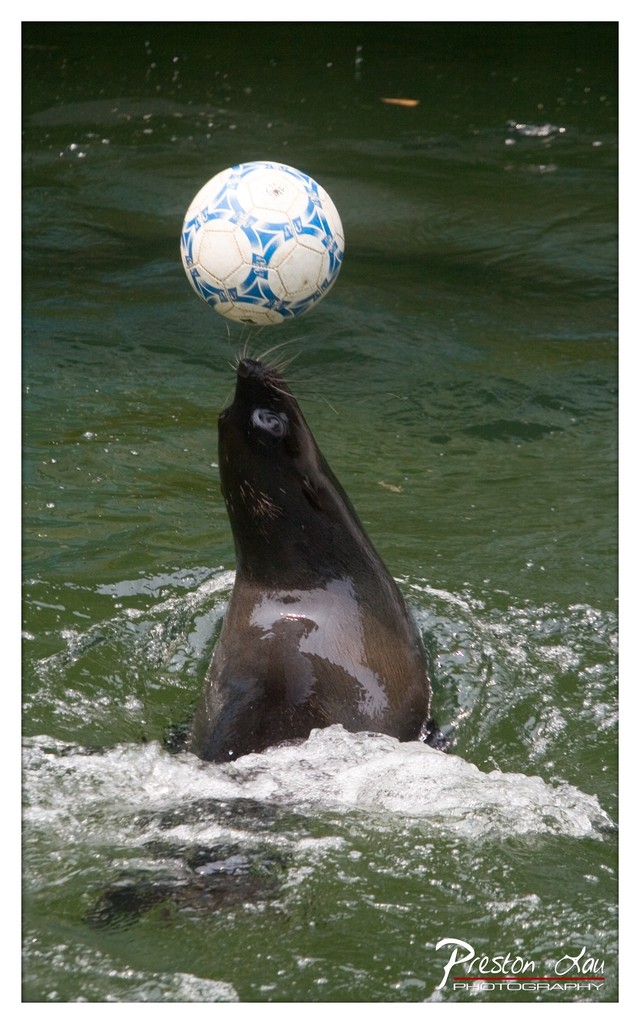

1. Overall Rating (0–10) — 7.5
This photograph captures a playful and dynamic moment between a sea lion and a soccer ball, exuding energy and charm. The subject’s mid-action pose, with the ball perfectly balanced above its nose, creates a strong sense of motion and connection. While the image is technically sound and emotionally engaging, the slightly murky water and modest lighting prevent it from achieving a more polished, gallery-ready feel.
2. Composition (0–10) — 7.0
The sea lion is well-placed in the lower center, drawing immediate attention, while the ball floats just above, creating a strong vertical line that guides the eye. The ripples and splash add movement, though the framing could be tighter to eliminate some of the empty space around the edges.
3. Lighting (0–10) — 6.5
Natural daylight illuminates the scene evenly, highlighting the sea lion’s sleek form and the ball’s pattern. The light is soft and diffused, avoiding harsh shadows, but the water’s green tint slightly dulls the overall brightness and contrast.
4. Color & Tone (0–10) — 7.0
The contrast between the dark sea lion and the bright blue-and-white ball creates visual punch. The green water provides a natural, earthy backdrop, though the saturation is moderate, giving the image a slightly muted, documentary feel.
5. Creativity (0–10) — 8.0
The concept of a sea lion playing with a soccer ball is inherently playful and visually engaging. The photographer captures a moment that feels spontaneous and joyful, blending animal behavior with human culture in a whimsical, memorable way.
6. Technical Quality (0–10) — 8.0
Sharp focus on the sea lion and ball, with good detail in the fur and water droplets. The exposure is well-managed, and the image is free from significant noise or blur, showcasing solid technical execution.
7. Emotional Impact (0–10) — 8.5
The image radiates joy and wonder, evoking a smile with its lighthearted subject and dynamic energy. The viewer is drawn into the moment, feeling a connection to the sea lion’s playful spirit and the shared delight of a simple, joyful act.
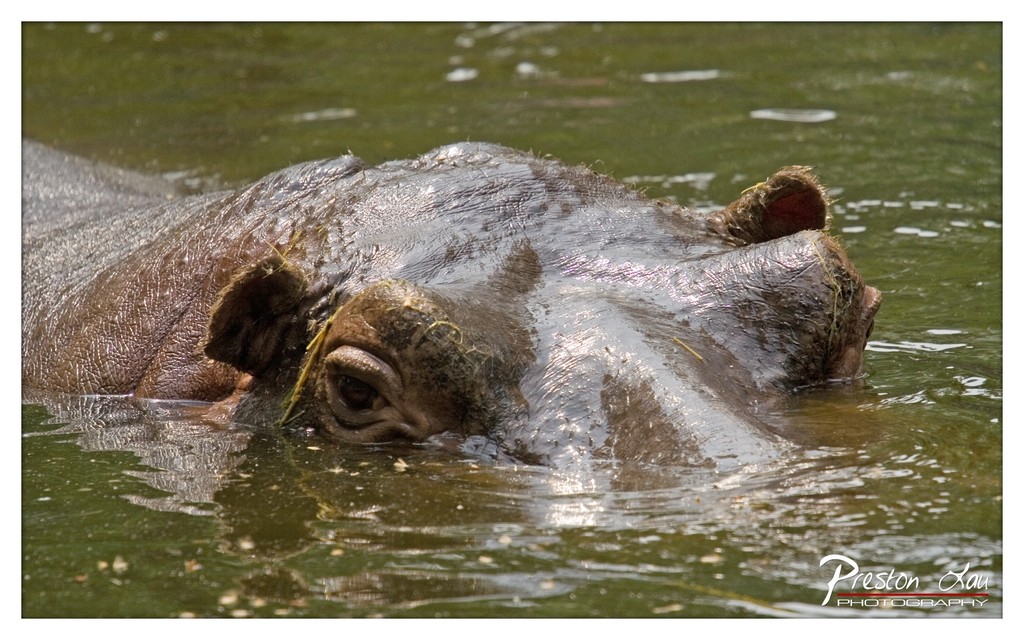

1. Overall Rating (0–10) — 7.5
This photograph captures a serene, intimate moment with a hippopotamus, its calm presence emerging from the murky water like a silent sentinel. The wet, textured skin and subtle reflections lend a tactile quality to the image, while the shallow depth of field isolates the subject with quiet dignity. Though the lighting and color are functional, they could better convey the richness of the natural habitat, slightly holding back the image’s emotional resonance.
2. Composition (0–10) — 7.0
The hippo is well-placed, with its head and eyes centered to draw immediate attention. The framing feels balanced, though the waterline cuts across the lower third, slightly disrupting the visual flow. A tighter crop might have enhanced focus on the animal’s expression.
3. Lighting (0–10) — 6.5
Natural daylight illuminates the scene evenly, highlighting the wet texture of the hippo’s skin and creating soft reflections on the water. However, the light lacks warmth and depth, giving the image a somewhat flat, overcast quality.
4. Color & Tone (0–10) — 6.0
The palette is dominated by muted greens and grays, accurately reflecting the water and earthy tones of the hippo. While harmonious, the lack of vibrancy and contrast reduces the image’s visual impact, making it feel more documentary than evocative.
5. Creativity (0–10) — 7.0
The image succeeds in capturing a quiet, contemplative moment in the wild, offering a rare close-up of a usually elusive creature. The choice to focus on the animal’s face rather than a full-body shot adds a sense of intimacy and personality.
6. Technical Quality (0–10) — 8.0
Sharp focus on the hippo’s eye and surrounding features ensures clarity, while the water’s gentle ripples add texture without distracting. The exposure is well-handled, with no blown highlights or crushed shadows.
7. Emotional Impact (0–10) — 7.5
The image evokes a sense of calm and quiet observation, inviting the viewer to reflect on the gentle strength of the hippo. The direct gaze of the animal creates a subtle connection, making the moment feel personal and profound.
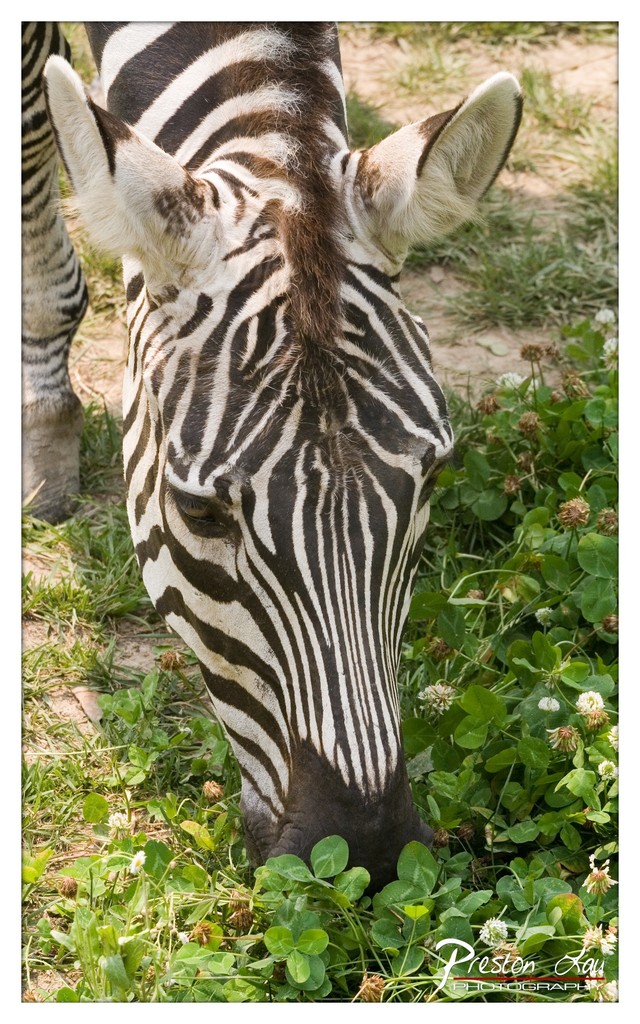

1. Overall Rating (0–10) — 7.5
This photograph captures a serene moment of a zebra grazing, its striking black-and-white stripes creating a compelling visual rhythm against the lush greenery. The close-up framing draws the viewer into the animal’s world, emphasizing both its natural beauty and the quiet dignity of its behavior. While the image is strong in detail and composition, the slightly overexposed background and modest color saturation hold it back from true artistic distinction.
2. Composition (0–10) — 8.0
The zebra’s head is centered and dominates the frame, drawing immediate attention. The diagonal line of the neck leads the eye naturally through the image, while the surrounding clover and grass create a textured, organic border that enhances the natural setting.
3. Lighting (0–10) — 7.0
Bright, natural daylight illuminates the scene evenly, highlighting the zebra’s striped pattern without harsh shadows. However, the background is slightly washed out, reducing depth and subtly distracting from the subject’s focus.
4. Color & Tone (0–10) — 7.5
The contrast between the bold black and white stripes and the vibrant green clover creates a dynamic and visually engaging palette. The tones are natural and balanced, though a touch more saturation would intensify the richness of the foliage.
5. Creativity (0–10) — 7.0
The image captures a simple, candid moment with strong visual appeal. While not highly experimental, the focus on pattern and texture demonstrates a thoughtful approach to wildlife photography.
6. Technical Quality (0–10) — 8.5
The focus is sharp on the zebra’s face, and the detail in the stripes and fur is clear. The image is well-exposed overall, with only minor overexposure in the background.
7. Emotional Impact (0–10) — 8.0
The quiet intimacy of the moment evokes a sense of calm and connection with nature. The zebra’s calm demeanor and gentle posture invite the viewer to reflect on the beauty of the natural world.
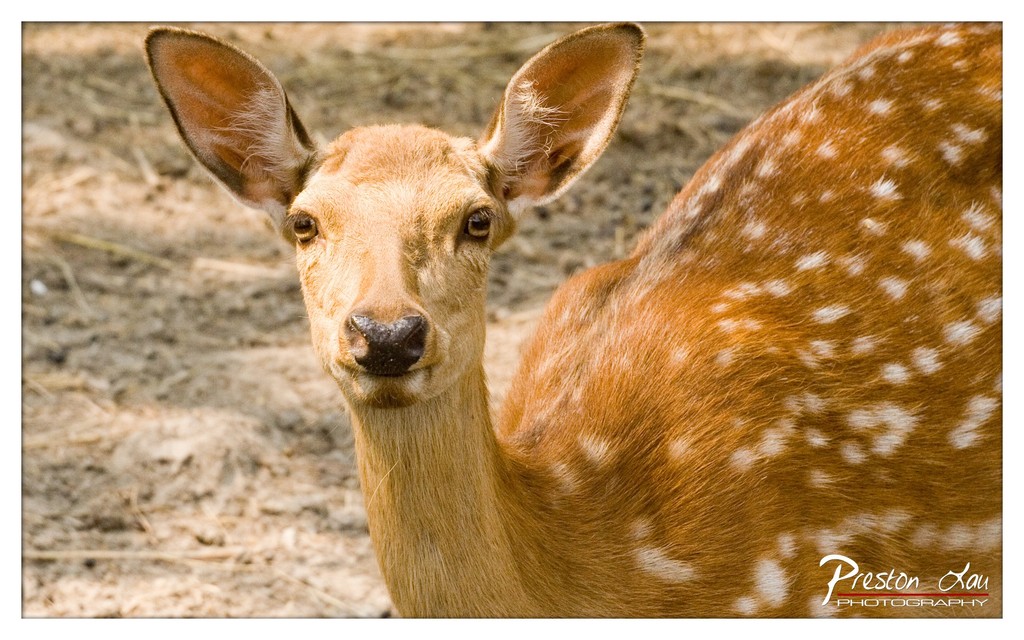

1. Overall Rating (0–10) — 7.5
This photograph captures a tender moment of connection between the viewer and a young deer, its wide eyes conveying curiosity and innocence. The shallow depth of field beautifully isolates the subject, drawing attention to the delicate texture of its fur and the expressive quality of its gaze. While the image is strong in its intimacy and focus, the slightly overexposed background light detracts from the overall subtlety of the scene.
2. Composition (0–10) — 8.0
The deer is positioned slightly off-center, creating a natural and engaging balance. The use of negative space on the left enhances the sense of the animal’s environment and draws the eye toward its face, which is the clear focal point.
3. Lighting (0–10) — 7.0
Natural sunlight illuminates the deer from the front, highlighting its features and creating soft, warm tones. The bright background light slightly washes out some detail in the surroundings but enhances the warmth and depth of the subject.
4. Color & Tone (0–10) — 8.0
The warm golden and earthy tones of the deer’s coat are rich and inviting, complemented by the soft white spots that stand out against the brown. The color palette is harmonious and evokes a sense of calm and natural beauty.
5. Creativity (0–10) — 7.5
The photographer captures a quiet, personal moment that goes beyond simple documentation. The close-up perspective and the animal’s direct gaze create a sense of narrative and emotional engagement, suggesting a fleeting but meaningful encounter.
6. Technical Quality (0–10) — 8.5
The image is sharp and well-focused, particularly on the deer’s eyes and face. The depth of field is effectively controlled, and the details in the fur are clearly rendered, showcasing strong technical execution.
7. Emotional Impact (0–10) — 8.0
The deer’s direct gaze and gentle expression evoke a strong sense of empathy and wonder. The image feels intimate and personal, inviting the viewer to pause and reflect on the quiet beauty of wildlife in a natural moment.
Loading map...